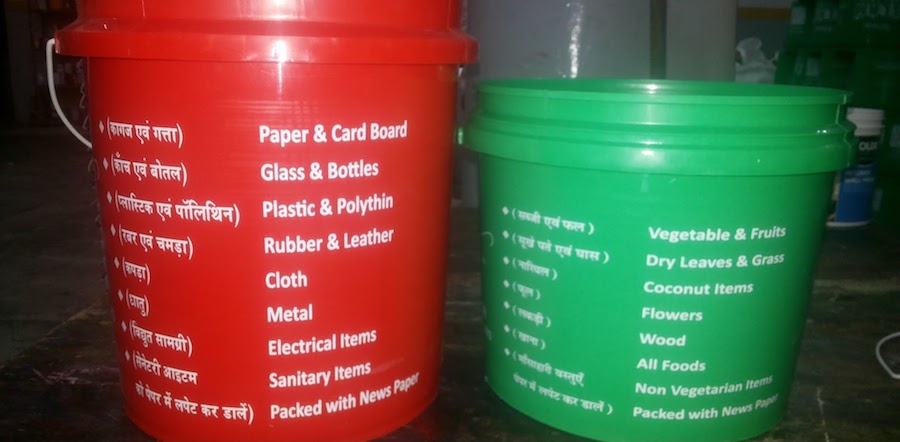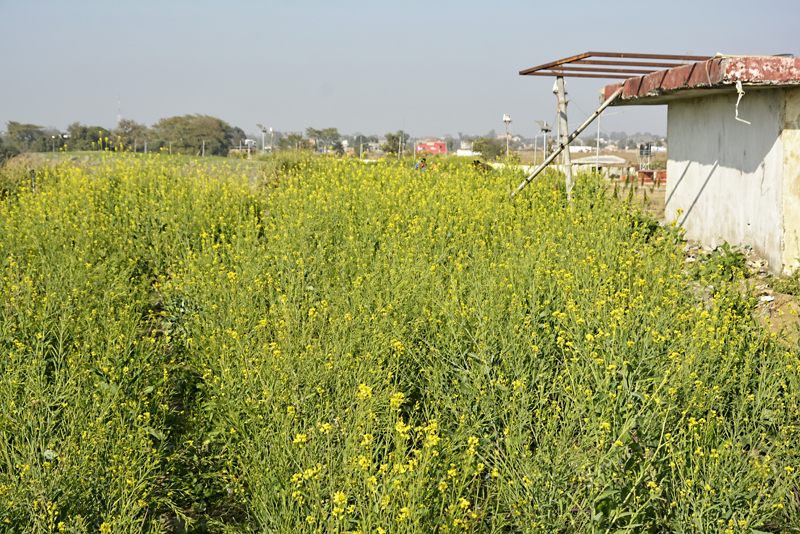Turning Garbage Into Gold With Vellore Srinivasan - Part 2

In Part I, I wrote about the various issues that garbage thrown in our street corners caused - issues ranging from air pollution, cows stuffed with plastic, and dengue caused by toxic water. Thanks to the problem being reiterated multiple times, the subject of garbage became very personal. From being a person to whom waste was never an alarming issue or one that required my attention, by the end of the day, I had decided to at least reduce my personal waste.
Srinivasan left me brimming with questions and thoughts: Yes, there are lots of issues surrounding waste management. But what do we do about it? Can I as the citizen do something without the government’s support? Can something be done of the existing landfills and dump-yards? How do we then dispose waste?
Srinivasan, who is the founder of Indian Green Services has been addressing garbage issues using simple and effective techniques. He introduced the Solid and Liquid Resource Management (SLRM), the crux of which is segregating day-to-day waste and reusing every bit of it. We understood how garbage is not waste but a resource, a potential raw material for the consumer industry, how garbage is gold if only we use it effectively.
Waste from residences, offices or hotels can be categorised into two - organic and inorganic. All those products which are produced by nature are organic, like vegetables, fruits, meat, cooked food, human and animal excreta. Everything that is factory made is inorganic: plastic, sanitary napkins, condoms, cans and tins. Both these categories of discarded materials need to be tackled separately. Once they are available separately, they can be sent out to be reused or recycled. Hence, they first need to be segregated at source in order to avoid mixing.
As part of the SLRM project, the residents and the participating agencies are trained in segregating their waste. They are handed 2 buckets - red and green. The red bucket is meant for inorganic waste while the green is for organic waste. People are further trained to segregate specific kinds of wastes: non-vegetarian wastes are to be wrapped in paper, marked 'X' in green and then put into the green dustbin. Sanitary waste, condoms, diapers are to be wrapped in paper, marked with a red 'X' and put into the red dustbin. Also, medical waste gets marked 'X' in blue and is to be put in the red bucket. Dust and mud are to be transferred to gardens or pots.
Training of residents and shopkeepers
In the case of organic waste, a product is categorised as 'waste' only from the time bacterial activity commences; until then the produce is good to be reused and it is not called waste. Food (such as wasted cooked food from restaurants) continues to be edible for animals and, in some cases, for humans, too. In short, the produce is consumable within a stipulated time frame. For instance, cooked food from homes and hotels starts decomposing 12 hours after it has been discarded; fruits and vegetables, 4 hours after being discarded, and meat, non-vegetarian food and animal parts from slaughter houses, 3 hours after being thrown away.
In order to manage these different categories of waste differently, the key lies in collecting within them respective retention period. Hence, in the SLRM project, Srinivasan focuses on having door-to-door collection twice a day with a gap of 4-6 hrs between each collection. This is done using tricycles which have a compartment system where the organic waste gets dumped into the green bin and the inorganic waste into the red segment. One tricycle caters to 250 families and requires a 5-member team for the collection; women from the Self Help Groups are employed to do this. The garbage collected is sent to the SLRM centres where different kinds of wastes are categorised together. The organic waste collected is cleaned and sent to goshalas and dog shelters. The non-vegetarian waste collected from slaughterhouses and butcher shops is cleaned, stored in earthen pots in a medium of cow urine and water and converted into liquid manure which is later sold to farmers. The many kinds of inorganic wastes are further segregated at the SLRM centre and sold to recycling units. The SLRM centres are run primarily by local Self Help Groups, thus creating local employment.
Inorganic waste cleaning and secondary segregation at an SLRM centre
Srinivasan has been able to employ this method in various cities and towns. One of the famous examples is that of Ambikapur city in Surguja district of Chhattisgarh. In 2015, the city officials found a need to manage their solid waste dumped across a 17-acre landfill and invited Srinivasan to implement the SLRM method there. The first thing tackled at Ambikapur was the landfill and dump yard. The aim was to convert the dump yard into a farm and the entire space into apark that would later serve as the town’s waste segregation unit. As a first step, the top layer of the pile was cleared of plastic bags since plastic prevents moisture retention. Ragi seed balls were then dispersed randomly. The field was covered with jute cloth and water was sprinkled on it because jute helps in holding moisture. With continuous sprinkling of water, the ragi plants sprouted and were harvested when ready.
The 17-acre dumping yard turned into a sanitation park Image: Flickr/ India Water Portal CC BY-NC-SA 2.0
The pile was structured to resemble a terraced field with the crops growing at the top of the pile and steps leading up to it. Over a period of time the size of this mountainous pile of waste reduced, implying that the organic waste deep inside the pile was being utilised effectively by the microbes, turning it into rich compost. The inorganic and plastic waste inside the pile remained undisturbed during the entire process, and only waste from the top layer was removed. This process is an effective way of using land productively and getting rid of waste while adding to the ecology of the region and making the place odour-free.
Farming on apartment terraces where organic manure is used.
The essence of the SLRM concept is source level segregation. This could very well be applied to an urban apartment scenario, too where segregation units can be set up on building terraces. The organic solid waste could be used as food in animal shelters, and the compost for landscaping or community farming. The inorganic waste can be sent out for recycling. Instead of tricycles, trolleys can be used for door-to-door collection.
The method could be effectively implemented at panchayat, city or even district levels. The larger the size of the place, more will be the segregation units and SLRM centres needed. A city like Bengaluru will need to be divided into zones with each zone having its own segregation units. Since varied degrees of waste are generated, individual segregation units can also be set up within zones for similar kinds of waste, such as from salons, tailoring units, slaughterhouses, and restaurants. Thus, every zone’s waste is tackled in a decentralised manner rather than being sent to another place, like in the present scenario.
A tertiary segregation centre at the sanitation park, Ambikapur. Image: Flickr/ India Water Portal CC BY-NC-SA 2.0)
At the city or district level, solid waste is not the only contributor to the garbage problem. Another big pollutant is liquid waste - grey and black water that, in our cities, is sadly mixed with stormwater. One of the best solutions to this is planting certain species of plants in drains. Plants like Canna indica and Chinese umbrella are greywater-loving plants which could be planted in stormwater drain channels that also receive domestic sewage water. These plants absorb the organic compounds in the water and act as primary filtration units thereby preventing mosquito breeding and foul smell.
The entire SLRM concept seems quite ambitious at first glance. The project does require certain amounts of systemic and infrastructural support. But as Srinivasan mentions, there are many government buildings lying vacant that could be reused as segregation units. The project focuses on employing women from Self Help Groups, providing them with training and entrepreneurial opportunities. From his long years of experience, however, Srinivasan says that some of the common challenges the project faces are of workers resigning from the job due to its monotonous nature, and non-cooperation from government agencies.
The solution to our nation’s garbage problem is simple and something that we could all help with, starting from our homes. I just need to segregate my waste effectively. Once that is achieved, I can use the organic waste for compost and send out the inorganic waste for recycling or just reuse it!
Images courtesy C Srinivasan unless mentioned otherwise.
Riya is a student of science and management in sustainable living at at Bhoomi College. She believes in the power the media offers. Using it, she aims at creating a socially just world where everybody lives together in harmony, in sync with nature. She is a civil engineer by profession, who prior to Bhoomi worked in the construction project management industry.











